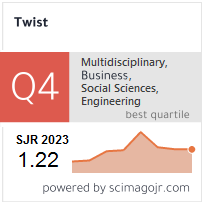Current Advances in Biological Activities of New Metal Complexes Bearing Aromatic Hydroxy Schiff-base Ligand
Keywords:
Hydroxy Schiff – base, Complexes, Spectra, Magnetism, Cytotoxicity, Molecular dockingAbstract
Metal complexes with biological activities are gaining prominence in the field of medicine as potential alternatives to biologically active organic compounds. These complexes possess distinctive characteristics, including molecular geometries not easily accessible by organic molecules and the ability to undergo ligand exchange, redox, catalytic, and photophysical reactions. These unique features provide the complexes with the potential to interact with biomolecules in unconventional ways and through distinct mechanisms of action.In light of these characteristics, we synthesized complexes with Cr(III), Mn(II), Fe(III), Ni(II), Co(II), Cu(II), Zn(II), Cd(II), Hg(II), Sn(II), and Ag(I) ions using the (E)-2-hydroxy-N-(2-((2-hydroxybenzylidene)amino)phenyl)benzamide ligand, a tetra-dentate Schiff-base. Characterization of the ligand and its complexes involved various techniques, including IR spectroscopy, elemental microanalysis, electronic spectra, magnetic susceptibility, conductivity, thermal analysis, proton nuclear magnetic resonance, mass spectroscopy, electron spin resonance, and electron microscopy. The proposed geometry for the complexes was an octahedral structure, with conductance measurements in DMF solution indicating non-electrolytic behavior.ESR measurements revealed anisotropic spectra with a d(x²-y²) ground state and covalent bond character for Cu(II) complexes. In contrast, Cr(III), Fe(III), Mn(II), and Co(II) complexes exhibited isotropic types with an octahedral structure. Electron microscopic data suggested that the complexes existed in nano-form. The cytotoxicity ranking against HEPG-2 cell lines was Vinblastine Sulfate (standard) > Ag(I) complex(3) > Cd(II) complex (4) > Cu(II) complex (2) > Ligand (1). Molecular docking studies were also conducted for the compounds mentioned above.
Downloads
Downloads
Published
Issue
Section
License
Copyright (c) 2024 TWIST

This work is licensed under a Creative Commons Attribution-NonCommercial-ShareAlike 4.0 International License.











